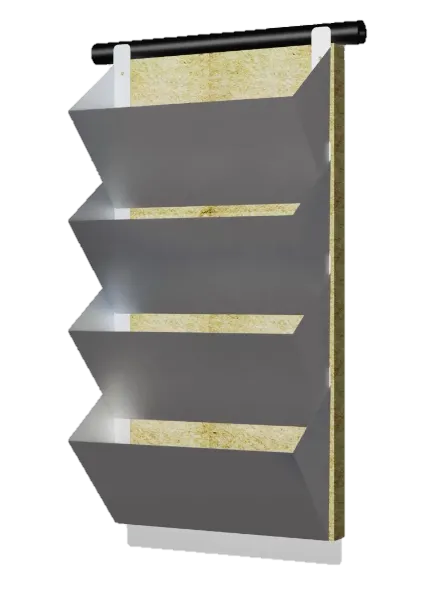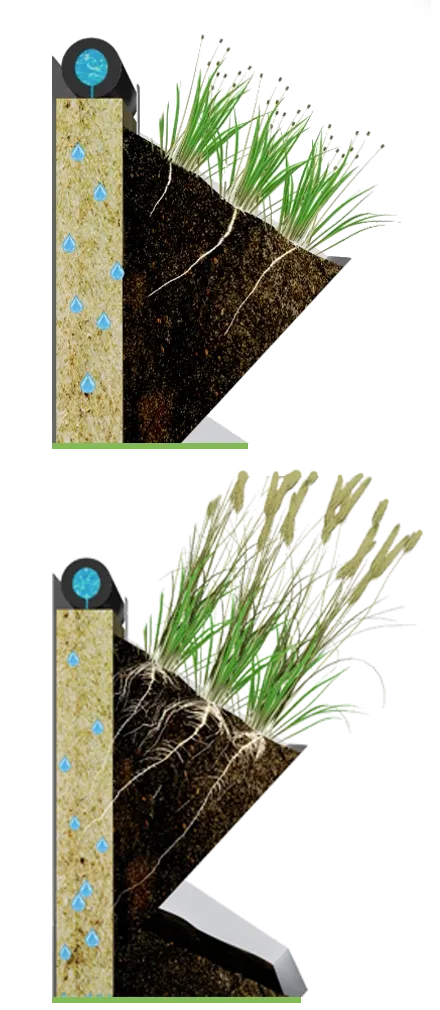ABOUT ECOFACADE
irrigation of the green facade module
Irrigation System
The system is irrigated using a drip line. Each level of modules has its own drip line. There are 16 drippers per square meter. The average watering time is about 5 minutes, which provides approximately 2.2 liters of water per cycle per square meter of the wall. Around 15% of the excess water flows back into the system. Water flowing through the wool causes it to become saturated. The roots of the plants sense the moisture in the substrate and grow in search of it. This process is called hydrotropism.

Irrigation System
The system is irrigated using a drip line. Each level of modules has its own drip line. There are 16 drippers per square meter. The average watering time is about 5 minutes, which provides approximately 2.2 liters of water per cycle per square meter of the wall. Around 15% of the excess water flows back into the system. Water flowing through the wool causes it to become saturated. The roots of the plants sense the moisture in the substrate and grow in search of it. This process is called hydrotropism.
Rock Wool Benefits
- Excellent water retention, ensuring plants have access to moisture for longer periods. At the same time, excess water drains easily, preventing overwatering and root rot.
- The structure of rock wool allows for free airflow around the roots, ensuring they are welloxygenated, which promotes their development and health.
- Rock wool is chemically neutral, meaning it does not affect the pH of the substrate or release substances that could harm plants. This makes it easy to control plant nutrition through an irrigation system with added fertilizers.
- Rock wool is an inorganic material free of pathogens or pests, minimizing the risk of plant diseases and infestations. It is also resistant to mold and fungi, fostering a healthy growth environment.
- Rock wool also acts as an insulator, protecting plant roots from sudden temperature changes, which is especially important for outdoor green walls.
- The absence of module edges and the use of rock wool allow roots to spread sideways across the entire surface of the green wall.

Rock Wool Benefits
- Excellent water retention, ensuring plants have access to moisture for longer periods. At the same time, excess water drains easily, preventing overwatering and root rot.
- The structure of rock wool allows for free airflow around the roots, ensuring they are welloxygenated, which promotes their development and health.
- Rock wool is chemically neutral, meaning it does not affect the pH of the substrate or release substances that could harm plants. This makes it easy to control plant nutrition through an irrigation system with added fertilizers.
- Rock wool is an inorganic material free of pathogens or pests, minimizing the risk of plant diseases and infestations. It is also resistant to mold and fungi, fostering a healthy growth environment.
- Rock wool also acts as an insulator, protecting plant roots from sudden temperature changes, which is especially important for outdoor green walls.
- The absence of module edges and the use of rock wool allow roots to spread sideways across the entire surface of the green wall.
